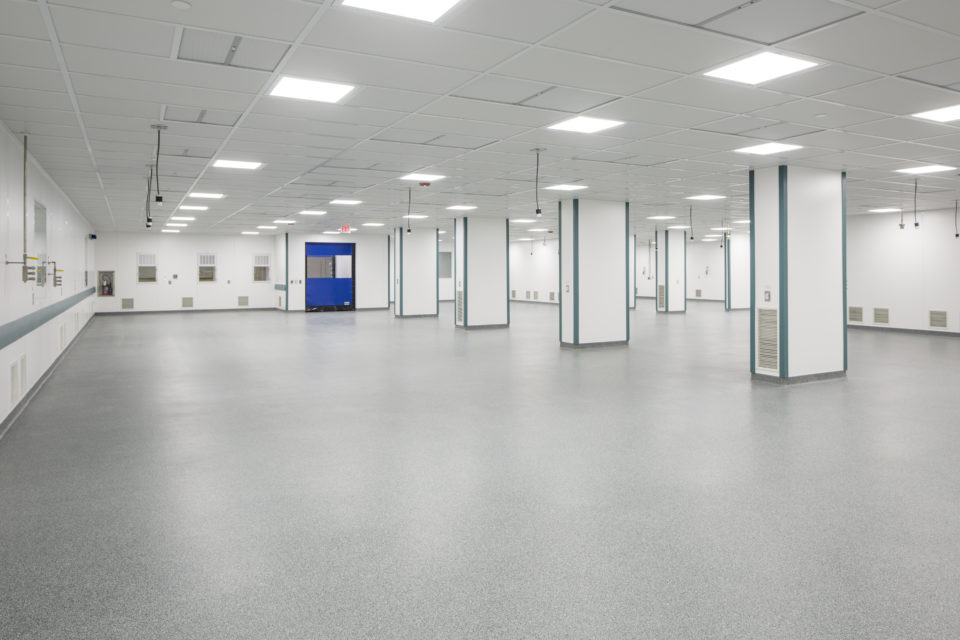
The invention of the cleanroom was a revolution decades in the making. Today, cleanrooms are a critical part of dozens of industries—from semiconductors to pharmaceuticals and gene therapy—yet modern cleanrooms simply were not possible before the 1960s. The reason is airflow.
Since the widespread adoption of germ theory in the 1800s, there was a recognized need for clean, controlled environments for medicine, in particular. The introduction of disinfectants—think Joseph Lister of Listerine fame—made it possible to clean a room enough to make surgery much safer. Yet, the control of airflow—a staple of modern cleanroom technology and hospital facilities alike—was not yet feasible.
The war effort drove some of the earliest experiments in cleanroom design, but it was hampered by the technology of the time. Defense plants in World War II used rudimentary controlled environments to limit foreign object debris and chemical contamination while manufacturing aircraft or sensitive electronics. Dust, in particular, was known to foul sensitive electronics, yet little more could be done than to try to ventilate a designated clean area with fans.
Ultimately, defense research would spawn the first cleanrooms really worth the designation almost two decades after the war.
Enter Willis Whitfield
It was a singular genius that made the modern cleanroom possible, American physicist Willis Whitfield (1919-2012). Born the son of an Oklahoma cotton farmer, Whitfield became fascinated with electronics, a common hobby during his youth at the dawn of the radio age. After serving in the US Navy in World War II, he began working in electronic systems for experimental aircraft and, by the 1950s, was working on components for nuclear weapons at Sandia National Laboratories in New Mexico.
It was at Sandia where he first began studying the puzzle of how to control dust and contamination to create sterile environments for manufacture. Even at the time, state-of-the-art cleanrooms were unreliable. Whitfield’s work combined the principles of laminar flow—the tendency of moving air or fluid to sort the motion of particles in layered, smooth paths—with filters to scrub the air.
Whitfield’s first cleanrooms in 1962 were little more than boxes with filtered airflow, yet they were dramatically effective. So effective, in fact, that many of his colleagues were skeptical of claims until they saw the results. Particle detectors don’t lie.
Sandia freely shared the technology Whitfield pioneered among the government’s network of national laboratories, and his designs soon took off in private industry and medicine. Sandia estimates that, by the end of the 1960s, cleanroom design and manufacturing had become a multibillion dollar industry.
“You cannot underestimate the impact Whitfield has had on manufacturing,” said Royce Tourtillott, mechanical engineer and AES Clean Technology’s western regional sales manager. “His innovations made much of the modern world possible, from the mass production of consumer products to the unprecedented rapid development of vaccines against COVID-19. All of it relies on cleanroom principles Whitfield first discovered.”
Modern Cleanrooms: Modular and Beyond
In the 1980s, AES Clean Technology would make the next great leap with modular cleanroom design. Beginning with HVAC engineering, AES Clean Technology gradually acquired the means of producing complete modular cleanrooms. Ultimately, AES Clean Technology would transform cleanroom design from boutique one-off products to standardized systems engineered to maximize performance and maintenance.

“At AES, we often say that HVAC represents the heart and soul of a cleanroom, because that is where we got our start,” Tourtillott explained. “Now, our entire suite of modular offerings–from the ceiling to the lighting to the AES Omni Utility Raceway infrastructure embedded in our modular wall panels–are there to protect the essential function of airflow in through the cleanroom.”
Today, with the introduction of the Faciliflex Module and Faciliflex Express cleanroom offerings, AES Clean Technology takes the next great leap in cleanroom design, leveraging modern materials and efficient HVAC systems to deliver a commissioned cleanroom in as little as six months.
Contact us today or fill out the form below and learn how our team of cleanroom experts can assist in making your next cleanroom design build more efficient, compliant, and within budget!
